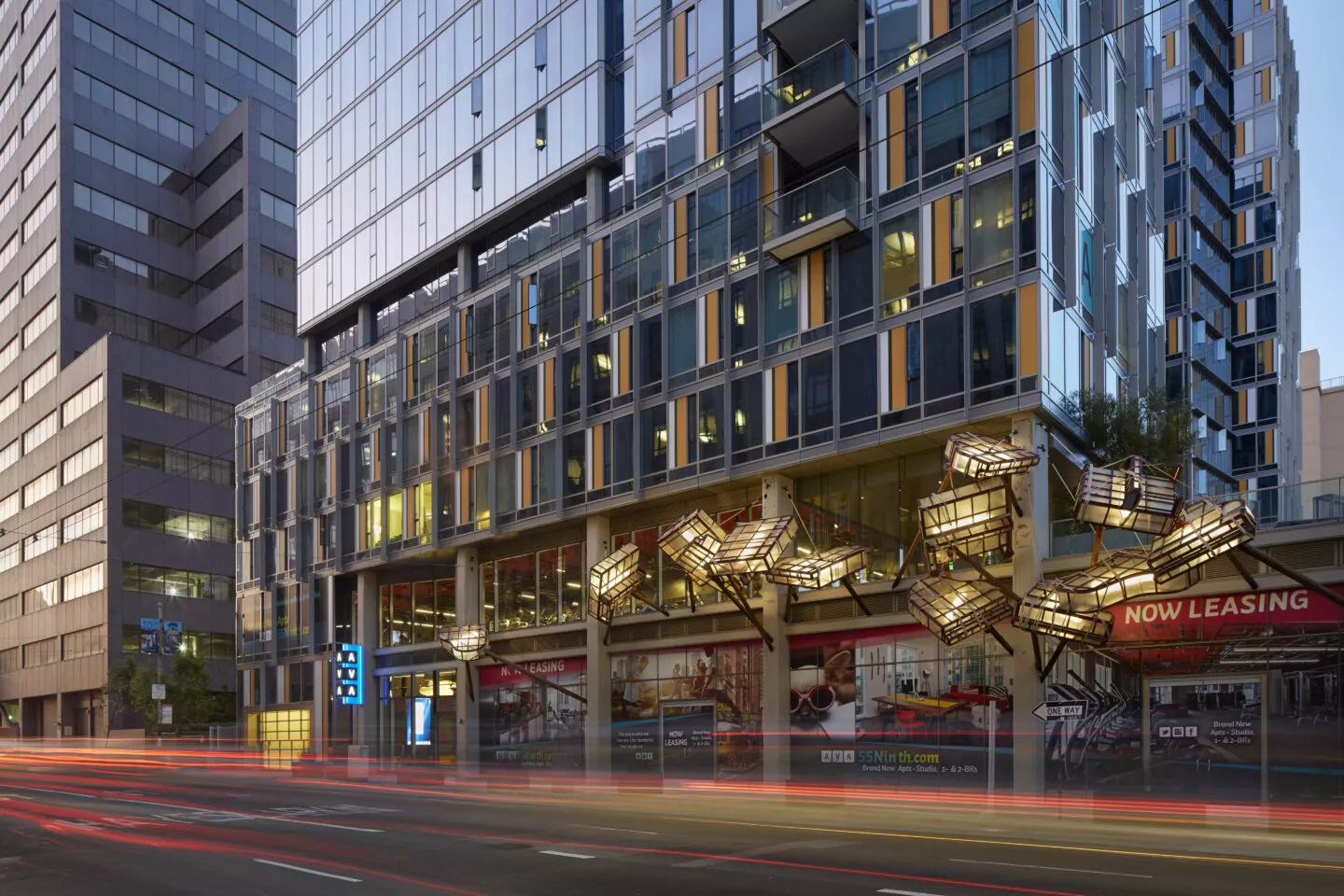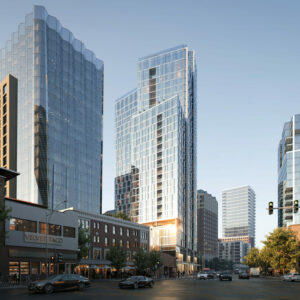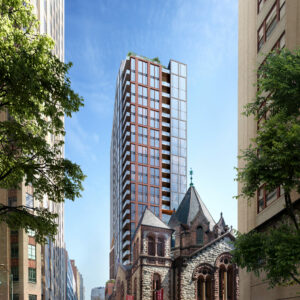AVA 55 Ninth
AVA 55 Ninth is located across from the new Twitter Headquarters in the Mid-Market Street redevelopment corridor in downtown San Francisco. Developer Avalon Bay envisioned a new building that would appeal to the younger, tech-savvy generation of workers flooding the revitalized Civic Center area.
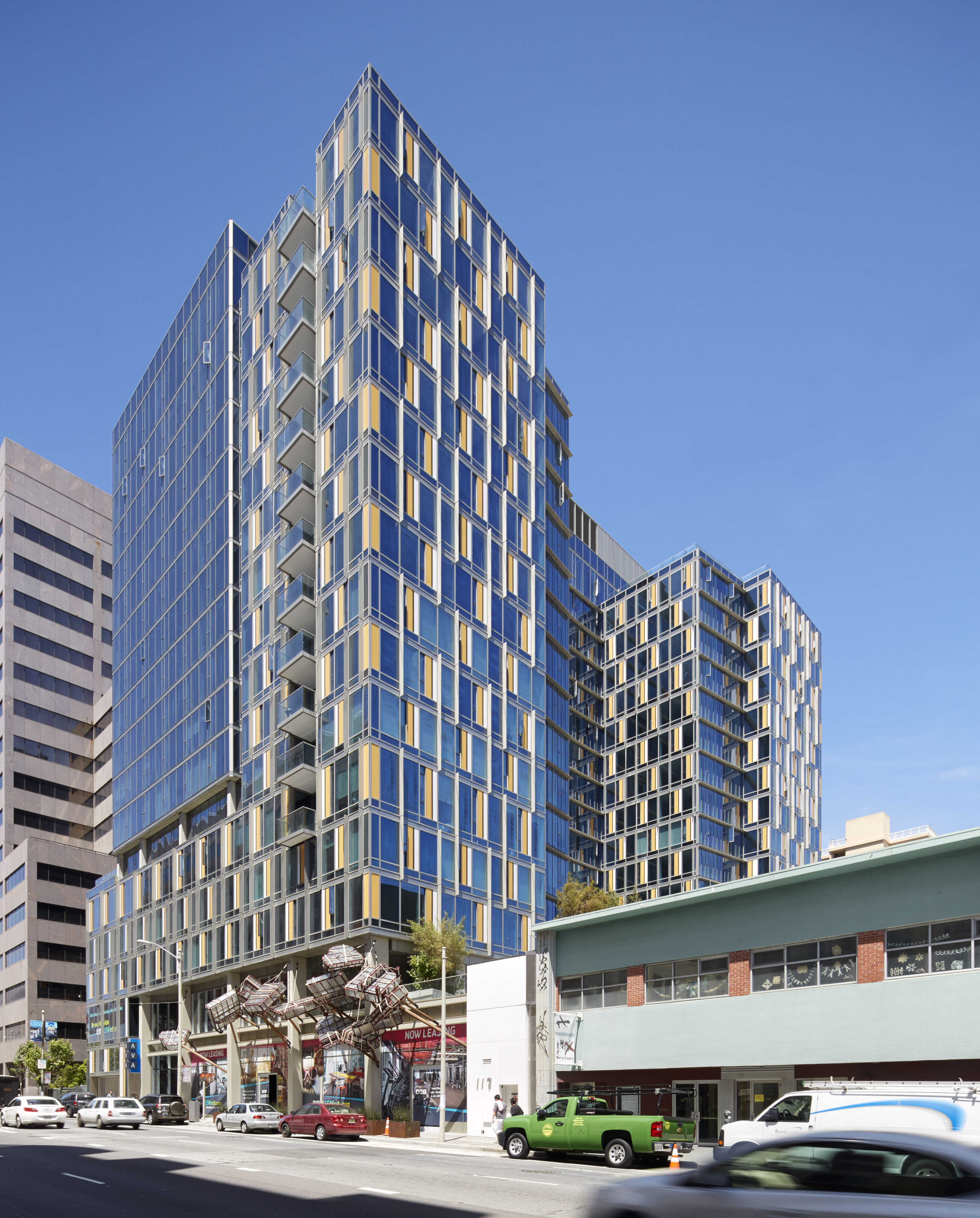
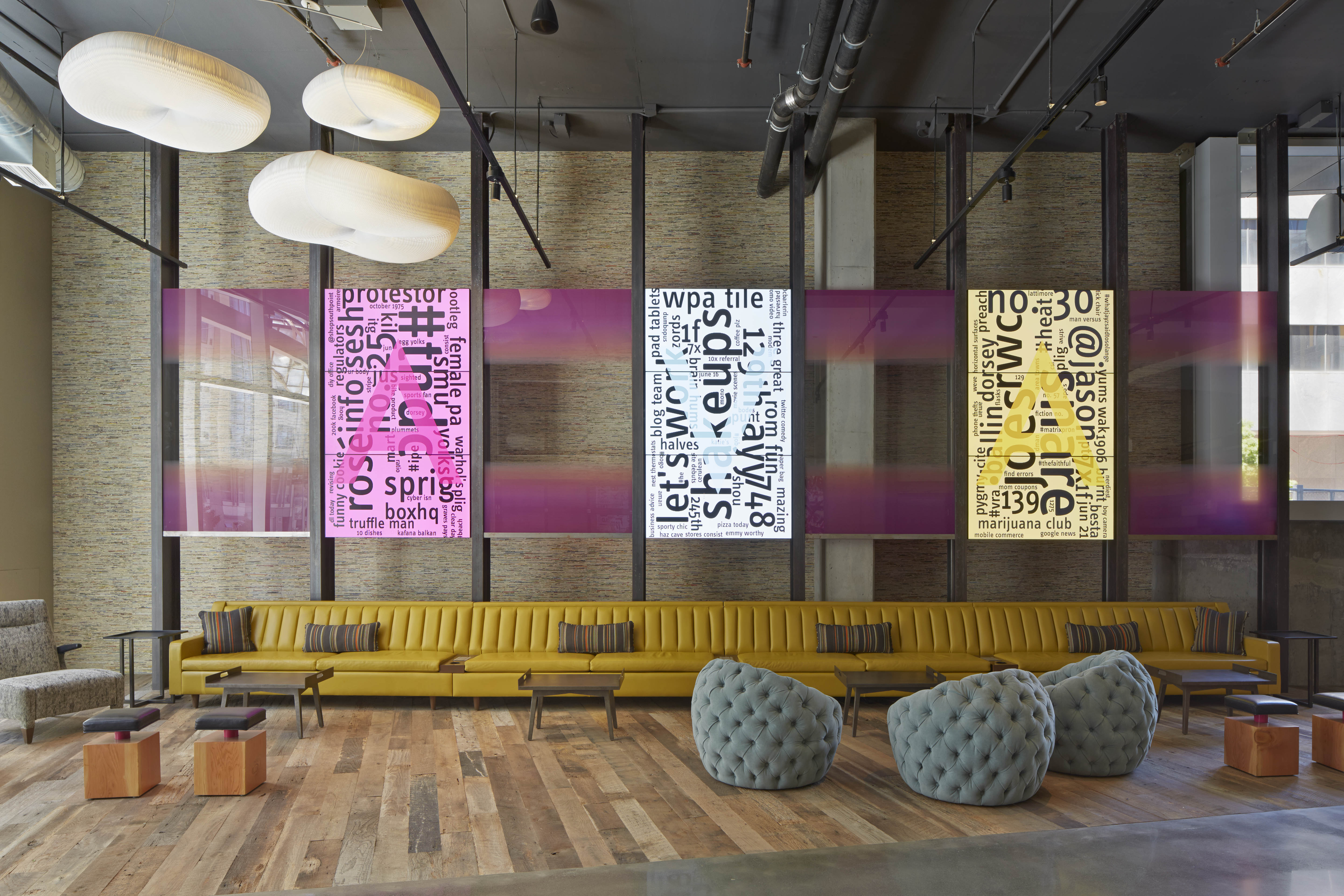
The design emphasizes finishes of exposed board-formed concrete and ecologically sensitive and re-used materials and furnishings throughout, from the lobby to the unit interiors. A generous, South-facing outdoor amenity deck serves as one of many social focal points for this generation of community-driven residents, providing exterior kitchens and lounge spaces, table tennis, and a movie screen with ample seating in a lushly landscaped setting. Three maker labs on the building’s north side offer furnished workshop spaces—a unique feature that provides DIY residents with a coveted amenity often lacking in the urban environment: garage space.
Meanwhile, the expression of the exterior façade acts as a bridge in scale, color, and materiality between the buildings flanking the project: a monolithic twenty-story office building with dark ribbon windows to the north and a finely-detailed brick and terra cotta building from the 1920s to the south. AVA 55 Ninth takes its color cues from each of these, and then gradually steps its scale from a large, glass cubist expression against the northern property down to an intricate, highly textured wall in warm hues as a gesture to its more delicate southern neighbor.
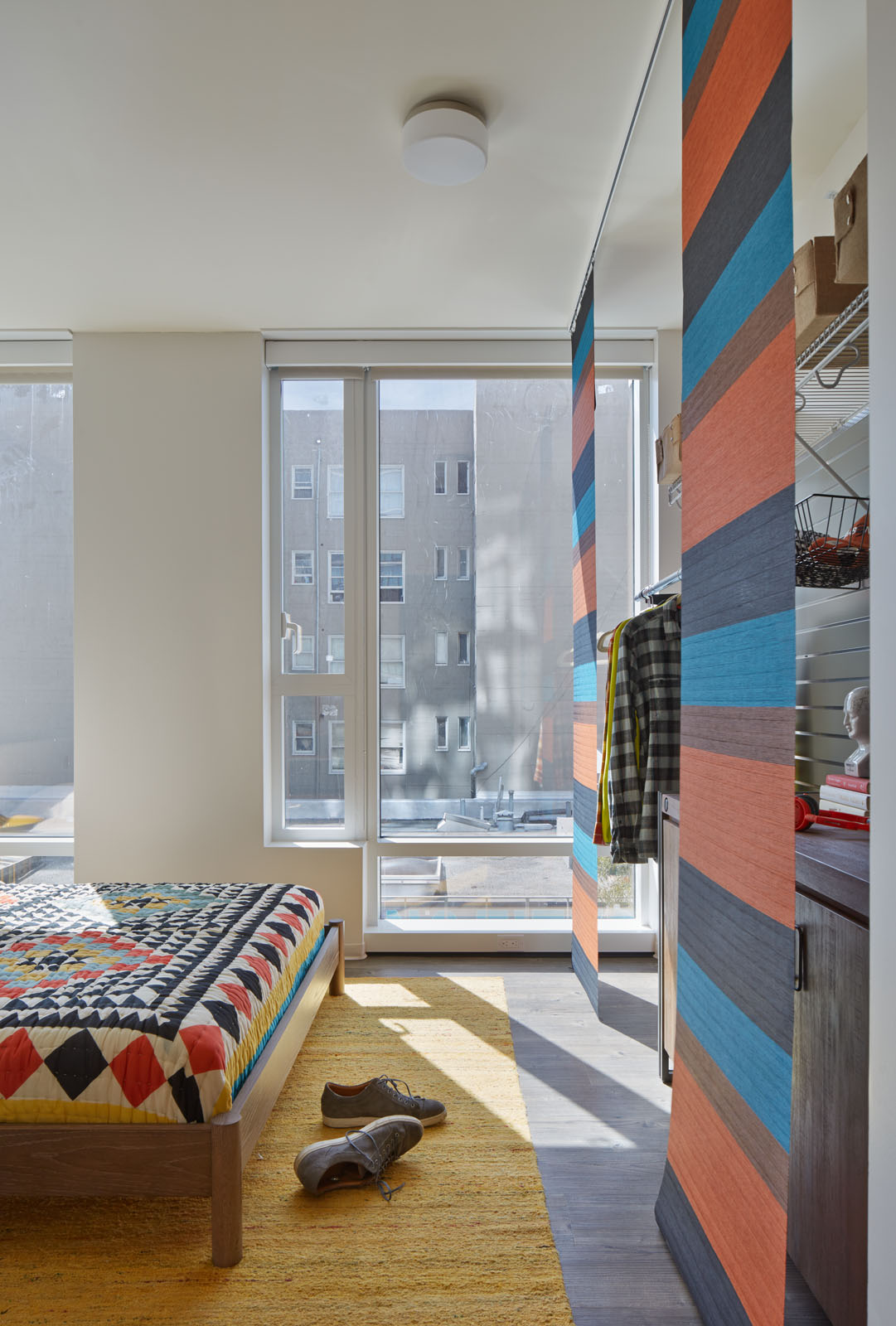
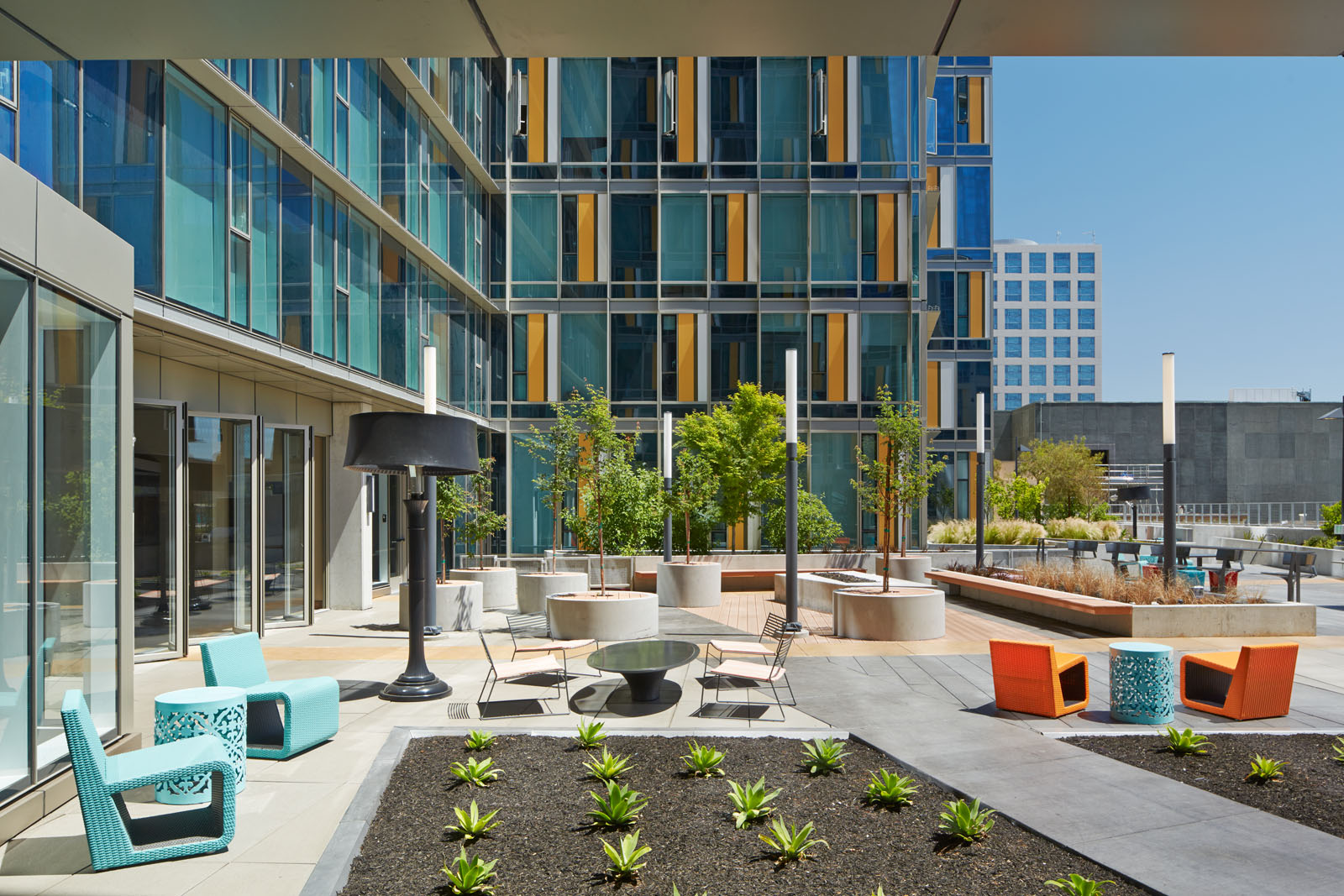
SCB designed 55 Ninth to speak to the sensibilities and needs of this new type of resident—without sacrificing a conscientious response to the building’s context.
